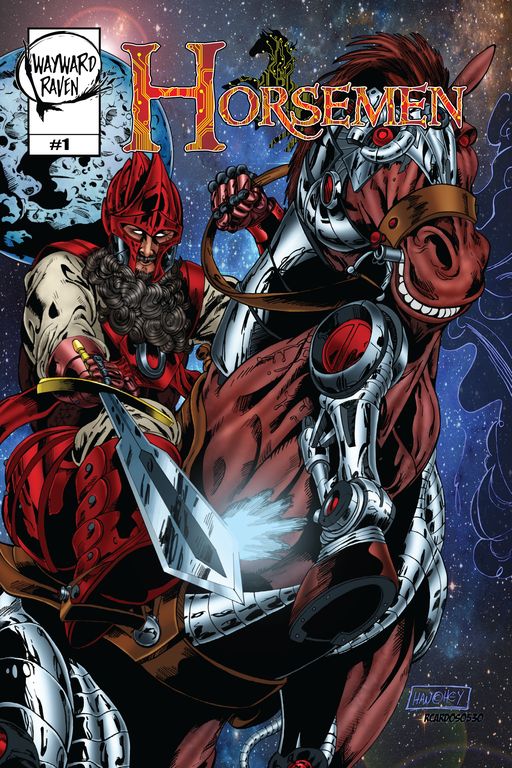Kickstarter, the crowdfunding website platform for creative projects, has changed the way things get made. Fans can directly finance books, albums, video games, and all sorts of other enterprises, and artists can focus on the work they love without worrying about pitching to various publishers, agencies or middlemen.
The site boasts over 50,000 projects successfully funded. It’s funded Hollywood movies, albums by award-winning musicians, and dozens and dozens of comics. Heck, it seems like everyone has a friend or two who printed a run of their webcomic or ran a miniseries off the profits of a Kickstarter project. Authors like David Willis and Gordon McAlpin have found great success in using the site to run pre-orders for comic print collections, and artists like KC Green and Yuko Ota spotlighted their work in the Benign Kingdom series of art print projects.
“The intended goal was $4,200 but we only raised a quarter of that,” Jones said. The funds would have been used to pay artists, the printer, and for costs the company would face debuting at New York Comic Con. Unlike other websites, Kickstarter only charges backers if the entire goal is reached or exceeded by the deadline.
“What surprised us was the competition and how some used the platform,” Jones said. “Basically, there were some famous and established entertainment industry professionals who drew traffic away from other campaigns, not just ours, and used the platform as a direct marketing/pre-order system for products instead of being a place for individuals to act as micro-angel investors for startup enterprises. We knew this existed but not the extent. Another surprise was the realization that we didn’t anticipate this properly and really didn’t prepare correctly for the competition. “
Horsemen is only one of numerous projects that have gotten lost in the crowd. It’s often hard for new, relatively unknown creators to get the clout and buzz necessary to achieve their goals. This was the case for John Barrie, whose horror short film, Checkmate, failed to achieve funding.
“We were attempting to start with literally nothing, and trying to convince people to trust us with the money to make a short film,” Barrie said. “We were able to demonstrate gore make-up, but we couldn’t show that we were competent to actually film. I feel like, had we been a bit more established and invested some of our money in the project ahead of time and used the Kickstarter more as a way to pay off the debt we had incurred starting filming rather than asking for money purely speculatively, we would have done a better job.”
“I had always imagined Kickstarter to be analogous to putting Moses in a basket and floating him down the river…the rest would just take care of itself,” Barrie continued. “ It quickly became apparent that despite Kickstarter’s reputation, without the pre-established fame of a Zach Braff or a project with a built-in fan-base like Veronica Mars, it was still really beholden on me to sell my product, not just [to] come up with incentives and write an interesting Kickstarter page, but really go out and flog my social media connections and spend a lot of time talking about what I was doing. I had mistakenly thought that the percentage you pay to Kickstarter meant that they would help you to promote your project, when all they are doing is hosting it.” This was a common refrain: Kickstarter isn’t some quick cash-grab instead of your job, it becomes your job. Dr. Orion Kidder said the same after the project he worked on with Scott Sharplin; “The Ages of Allu”, a Pathfinder game-world, failed to achieve funding despite raising over $6,000.
“For me, it was keeping up with the demands for content,” Kidder said. “I didn’t realize how much just the KS campaign required stuff to keep it going. The demands weren’t unreasonable given the situation; they were just a lot more than I had expected.”
Kidder doesn’t have any immediate plans to start another campaign, but he did learn a lot about fundraising and the Kickstarter system and culture from the experience.
“Beat the bushes the whole time. Make that your job,” he said. “Don’t feel embarrassed for asking; there is literally no shame in asking friends and family to support you. Also, make your rewards things that don’t add cost to the campaign. That’s a vicious circle that I felt like we got sucked into. Instead, prep your rewards beforehand, and make them basically free to you but value-added for people who pledge. At the very least, pledges should get a copy/unit of whatever it is you’re making. The purest form of Kickstarter, to me, is that someone is just pre-buying a product you don’t have to have finished yet.”
For their part, Kickstarter tries to spin even project failure in a positive way. The website has no restrictions on creators trying failed projects again, and recommends viewing early failed Kickstarters as a learning experience, as well as seeking feedback from established, successful users.
Barrie is a little hesitant to use the platform again.
“I don’t have a lot of connections on social media that would typically invest in projects like the ones I am interested in making,” he said. “They’re mainly friends and relatives, and asking them for money is icky enough without doing it impersonally. However, if I ever get a project far enough along in development that it’s almost completely done, and I am proud of it, and all it needs is a little financial push to make it take the leap from fantasy to reality, I would consider giving Kickstarter another chance.”
Back at Wayward Raven Media, however, Jones is a little more optimistic. He said that the company had already run a successful campaign on Indiegogo, another crowdfunding site, and was gearing up to try Kickstarter again. He views their first attempt as growing pains.
“Doing a campaign is a job, “Jones said. “Can’t do slapdash and expect it work. Know that over 50% of crowd-funding campaigns fail and it is best to always seek alternative financing as well. In the video and in the text on the campaign’s page, write or talk about what the product/project/company can do for the supporter. Less We’s and more You’s. People want to help and be a part of your story, include them in any way you can.”
“In conclusion: Research, Prepare, Press, Publish, Persist and Hope.”





